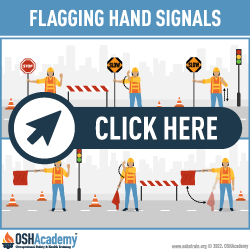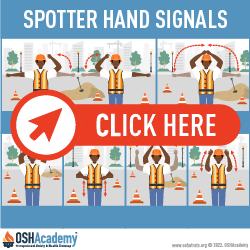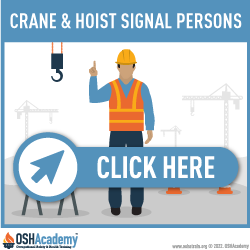Signals
Signals are moving signs, provided by workers, such as flaggers, spotters, and crane/hoist signal persons. They are also provided devices, such as flashing lights, to warn of possible or existing hazards.
Flaggers
Flaggers protect workers by providing temporary traffic control (TTC) and maintaining traffic flow through a work zone, despite a shutdown of lanes. They stop motorists from accidentally driving into the work area. Signaling by flaggers and the use of flaggers, including warning garments worn by flaggers, must conform to Part 6 of the MUTCD (incorporated by reference, see 1926.6).
Spotters
Spotters have a different job than flaggers. They keep equipment operators in the work zone with obstructed views from backing over or running over workers they can't see. Spotters are also used when working in rough terrain areas, when performing blind lifts and when working around overhead power lines.
Crane and Hoist Signal Persons
Signal persons are used during crane and hoist operations to transmit signals to the operator. Only one person may give signals to a crane/derrick operator at a time, though any person may give an emergency stop signal. A more complete set of signals can be found in OSHA 1926 Subpart CC App A.
Knowledge Check Choose the best answer for the question.
3-4. Who keeps equipment operators from backing over workers or hitting objects?
You forgot to answer the question!



